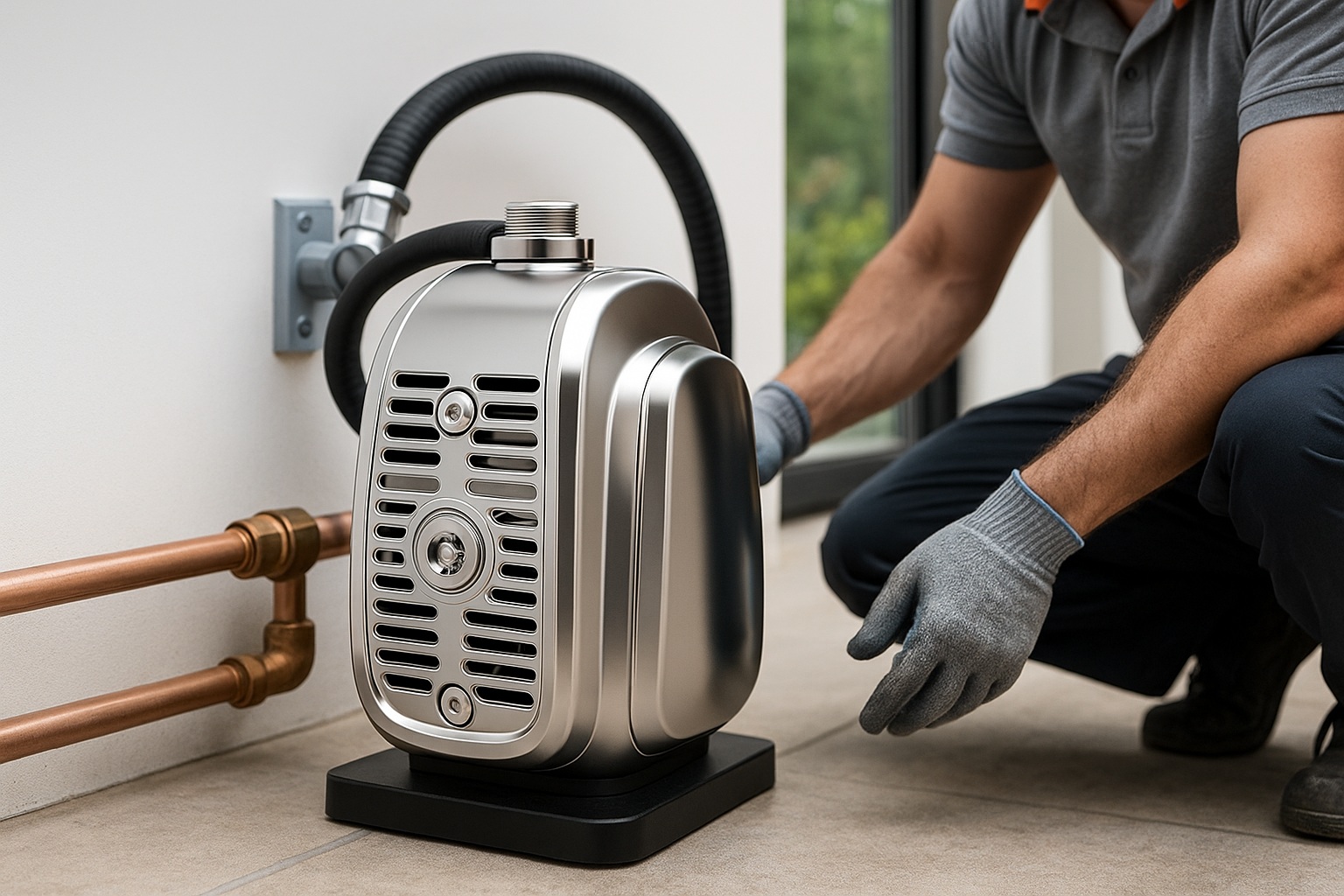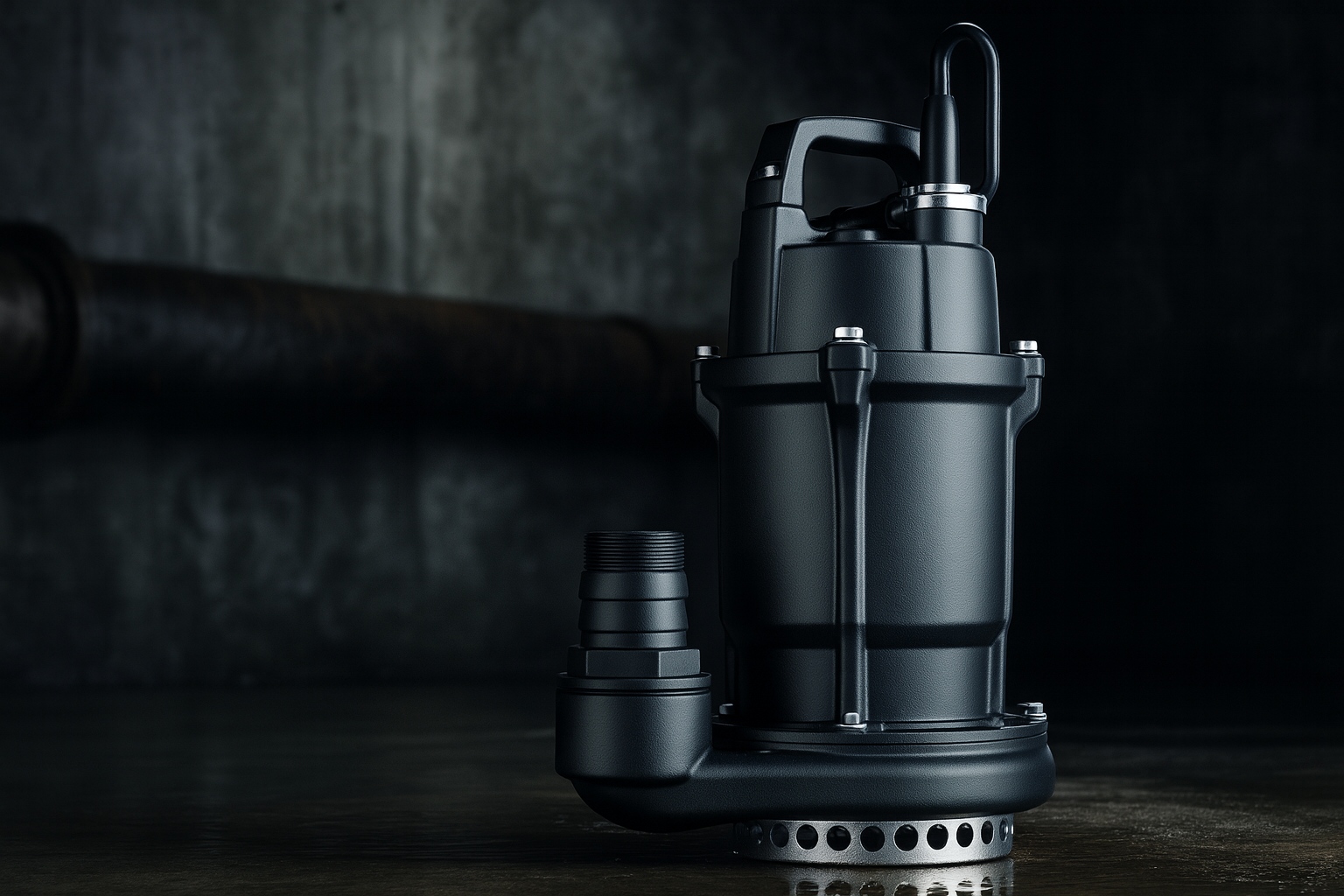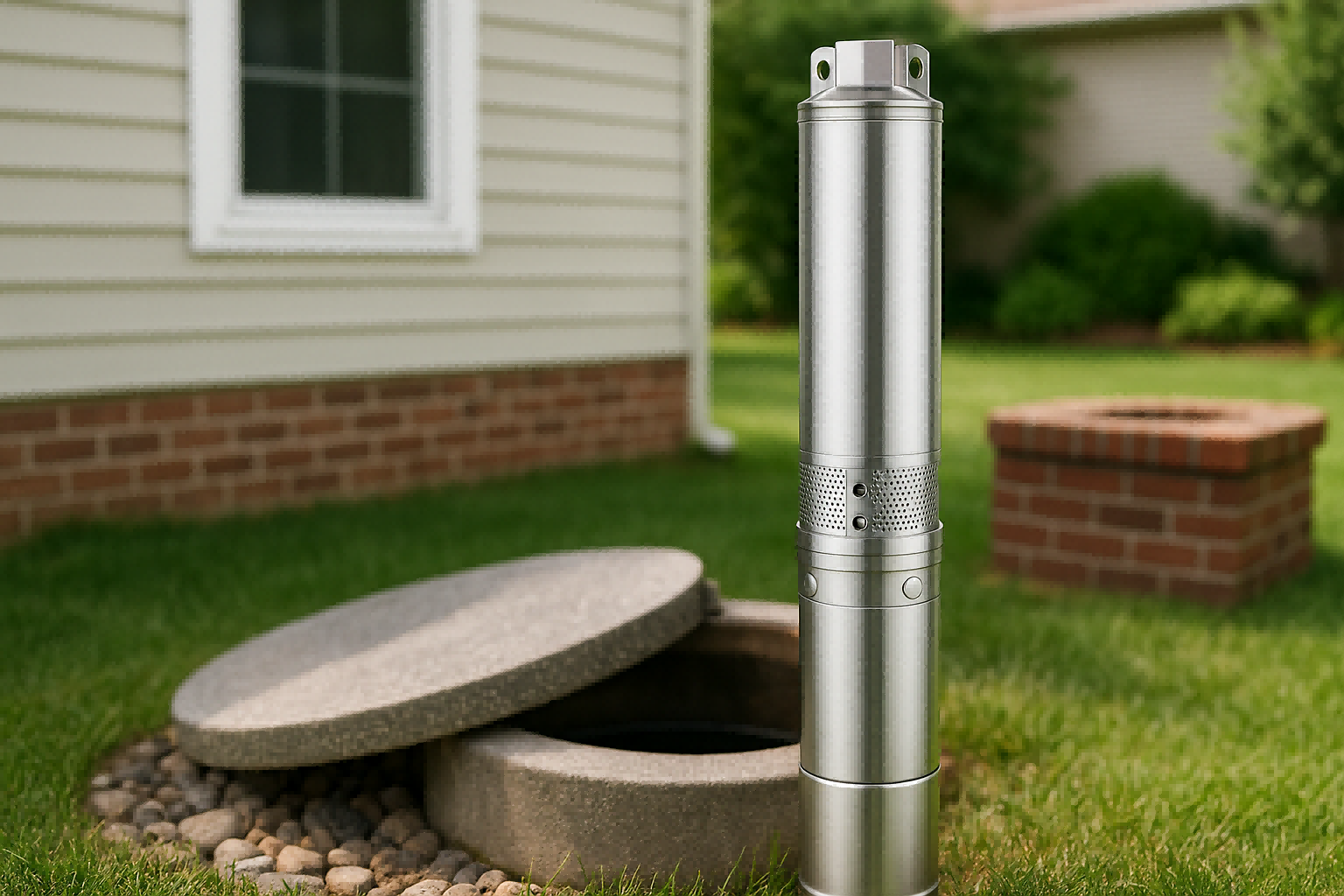Your engine's temperature gauge is climbing, suggesting a serious problem.
You check for a coolant puddle, but find nothing, leaving you confused.
This guide explains how a water pump can fail silently, causing overheating without a single drop leaking.
Yes, a bad water pump can absolutely cause overheating without any visible coolant leak.
Internal failures, like a worn impeller, a slipping pulley, or a damaged bearing, can stop coolant from circulating effectively.
This failure happens even when the cooling system is perfectly sealed, leading to dangerous engine temperatures.

Understanding the hidden ways a water pump can fail is crucial for any vehicle owner.
It is the key to preventing a catastrophic and expensive engine disaster.
While a puddle of coolant is a clear signal of trouble, the absence of a leak can give a false sense of security.
The truth is, some of the most damaging pump failures happen silently, deep inside the mechanism.
Let's explore how the system works and the specific internal problems that can lead to an overheating engine, even with a full reservoir of coolant.
This knowledge will empower you to recognize the subtle warning signs and act before it's too late.
How the Water Pump Works
You know the water pump is vital for your engine's health.
But do you understand its exact role in preventing a meltdown?
Understanding this simple yet critical function is the first step toward diagnosing cooling system problems.
The water pump acts as the heart of your vehicle's cooling system.
Its primary job is to continuously circulate coolant (antifreeze) through the engine, radiator, and heater core.
This constant flow is essential for transferring heat away from the engine block.
The concept of a water pump is straightforward, but its execution is vital for engine longevity.
Without proper circulation, the coolant inside the engine block would quickly boil.
This would lead to a rapid and destructive rise in temperature.
The pump ensures that hot coolant is constantly moved to the radiator to be cooled, and cool fluid is sent back to absorb more heat.
The Basic Principle: Heat Transfer
An internal combustion engine generates an immense amount of heat.
The cooling system's job is to manage this heat and keep the engine within its optimal operating temperature range.
The water pump facilitates this process by creating a flow, turning the static coolant into a dynamic heat-transfer medium.
It's a continuous cycle.
- Coolant absorbs heat from the engine block and cylinder head.
- The water pump pushes this hot coolant toward the radiator.
- Air flowing through the radiator fins dissipates the heat from the coolant.
- The cooled liquid then returns to the engine to repeat the cycle.
Key Components of a Water Pump
Most water pumps are a simple, centrifugal design, but they are built from several crucial parts that must work in harmony.
| Component | Function |
|---|---|
| Impeller | A fan-like rotor with blades that spins to pressurize and move the coolant. |
| Housing | The metal outer casing that contains the pump's internal parts and directs coolant flow. |
| Shaft & Bearing | The central shaft connects the pulley to the impeller, and the bearing allows it to spin smoothly. |
| Seal & Gasket | Prevents coolant from leaking out of the pump housing. |
| Pulley | The wheel on the outside of the pump that is connected to the engine's serpentine belt or timing belt. |
Belt-Driven vs. Electric Water Pumps
The method used to power the water pump has evolved over time.
Belt-Driven Pumps: This is the most common type.
The pump's pulley is connected to the engine's crankshaft via a belt (either the serpentine belt or timing belt).
As the engine runs, it spins the belt, which in turn spins the pump's impeller.
The speed of coolant circulation is directly tied to the engine's speed (RPM).
Electric Water Pumps: Found in many newer and hybrid vehicles, these pumps are not mechanically linked to the engine.
They use an electric motor controlled by the vehicle's computer (ECU).
This offers greater control and efficiency.
The ECU can run the pump at a variable speed based on the engine's real-time cooling needs, or even after the engine is turned off to prevent heat soak.
Regardless of the type, the fundamental purpose remains the same: keep the coolant moving.
Internal Water Pump Failure Without Leaks
Your engine is overheating, but there are no puddles on the driveway.
This confusing scenario points directly toward an internal pump failure.
The pump is failing to do its job, even though it's not visibly leaking fluid.
Yes, a water pump can fail internally without leaking.
Worn impeller blades, a damaged shaft, or a slipping pulley can severely reduce or stop coolant flow.
This internal breakdown is a silent cause of overheating, as the pump's outer housing and seals remain intact.
A water pump is a mechanical part with moving components.
Like any such part, it is subject to wear and tear that can compromise its function without causing an external breach.
The most common misconceptions about water pump failure involve leaks, but the reality is more complex.
An inability to move fluid is just as critical as an inability to contain it.
Understanding these non-leak failures is key to accurate diagnosis.
Worn or Corroded Impeller Blades
The impeller is the workhorse of the water pump.
Its blades are responsible for grabbing the coolant and forcing it through the system.
Over many years and thousands of miles, these blades can degrade.
Material and Design: Impellers can be made from stamped steel, cast iron, plastic, or composite materials.
While plastic impellers are less prone to corrosion, they can become brittle and crack.
Metal impellers, on the other hand, can suffer from severe corrosion and erosion, especially if the coolant's anti-corrosive properties have degraded.
The Effect of Wear: As the blades wear down, their surface area and shape change.
They become less efficient at moving fluid.
Imagine trying to row a boat with a paddle that is half its original size; you will move, but very slowly.
This drastically reduces the coolant's flow rate, causing the engine to overheat under load, such as when climbing a hill or driving at high speed.
Loose or Slipping Pulley
The pump's pulley transfers rotational energy from the engine's belt to the pump's impeller.
If this connection is compromised, the impeller won't spin at the required speed.
Slipping Belt: A old, worn, or improperly tensioned serpentine belt can slip on the water pump pulley.
When this happens, the belt is moving, but the pulley isn't spinning at the same speed.
You might hear a high-pitched squealing sound, especially on startup or when the AC is on.
Loose Pulley: The pulley itself can become loose on the pump's shaft.
It might wobble or spin inconsistently.
In this case, even with a perfectly good belt, the rotational force isn't being fully transferred to the impeller, leading to reduced coolant flow and eventual overheating.
Damaged Bearing or Seized Shaft
The heart of the pump's rotating assembly is its bearing and shaft.
This is often the first component to fail.
A bearing failure can manifest in two ways, both resulting in overheating.
| Failure Mode | Description | Audible Symptom |
|---|---|---|
| Worn/Noisy Bearing | The ball bearings inside the assembly wear out, causing the shaft to wobble. This wobble can damage the seal over time (causing a leak), but initially, it primarily creates noise. | A grinding or rumbling noise from the front of the engine that changes with engine RPM. |
| Seizing Bearing | The bearing loses its lubrication and begins to bind. This creates immense resistance, causing the shaft to spin slowly, inconsistently, or stop altogether. | A loud, high-pitched squeal or a sudden increase in engine temperature as circulation stops. |
When the shaft begins to seize, it places a huge strain on the drive belt.
In a worst-case scenario, a fully seized water pump can shred the belt or cause it to jump off the pulleys, disabling other critical accessories like the alternator and power steering pump.
How to Spot the Signs
Your car is trying to tell you something is wrong.
Ignoring subtle changes in performance or new noises can lead to a major breakdown.
Learning to recognize the early signs of a failing water pump is your best defense.
The most common non-leak signs are a fluctuating temperature gauge, unusual noises, and poor heater performance.
Listen for a high-pitched squeal or a grinding sound from the front of the engine.
Notice if your car's heater is blowing cool air, even when the engine is hot.
Recognizing the symptoms of a silent water pump failure requires paying attention to more than just what's under the car.
It’s about noticing changes in how your vehicle sounds, feels, and performs during everyday driving.
These clues often appear long before the engine temperature pegs into the red zone.
Acting on these early warnings can save you from being stranded and facing a much larger repair bill.
Temperature Gauge Fluctuations
This is the most direct indicator of a cooling system problem.
A healthy engine maintains a very stable operating temperature.
If you notice your temperature gauge doing any of the following, it's a major red flag:
- Creeping Up in Traffic: The temperature is normal on the highway but starts to rise when you're idling at a stoplight.
- Heating Up Under Load: The gauge climbs when you are accelerating hard, towing a trailer, or driving up a steep incline.
- Erratic Movement: The needle fluctuates between normal and hot, seemingly at random.
These symptoms suggest that the coolant is not circulating effectively enough to handle the engine's heat output, a classic sign of a weak water pump impeller or a slipping belt.
Unusual Noises from the Engine Bay
Your ears are a powerful diagnostic tool.
The water pump is typically located at the front of the engine, driven by the serpentine or timing belt.
New noises originating from this area should be investigated immediately.
Types of Water Pump Noises
| Sound | Likely Cause | Description |
|---|---|---|
| High-Pitched Squeal | Slipping Belt or Seizing Bearing | A sharp, piercing noise that often gets louder with acceleration or when the engine is cold. |
| Grinding or Rumbling | Failed Bearing | A low-pitched, rough sound, similar to marbles rattling in a can, that indicates the internal bearings are gone. |
| Whirring or Groaning | Early Bearing Wear | A consistent humming or whining noise that increases in pitch along with engine RPM. |
To help pinpoint the noise, listen carefully with the engine running and the hood open.
If the noise changes or goes away when you spray a small amount of water on the serpentine belt, it's likely a belt issue.
If the noise persists, the pump's internal bearing is the most probable culprit.
Poor Heater Performance in Winter
This is a clever diagnostic clue that many drivers overlook.
Your car's interior heater uses the hot coolant from the engine to warm the cabin.
A small radiator, called the heater core, is located inside your dashboard.
Hot coolant circulates through it, and a fan blows air across it to heat the car.
If the water pump is failing and not circulating coolant effectively, not enough hot fluid will reach the heater core.
As a result, the air blowing from your vents will be lukewarm or cold, even when the engine's temperature gauge shows that it is hot.
This mismatch is a strong indication of a circulation problem.
Diagnosing a Water Pump Problem
You've noticed the signs of overheating, but see no leak.
Now, it's time to confirm if the water pump is the culprit.
A proper diagnosis requires more than just a quick look, as the failure is internal.
Professionals diagnose a non-leaking water pump by checking for coolant flow, listening for bearing noise, and inspecting the drive belt system.
Technicians may also use special tools like a pressure tester or an infrared thermometer to identify circulation blockages and hot spots in the engine.
Since the problem isn't a visible leak, the diagnostic process must focus on the pump's performance.
Is it moving coolant effectively?
Is it spinning freely and quietly?
A professional technician has the tools and experience to answer these questions definitively.
This methodical approach ensures you are replacing the right part and not just guessing.
Avoids unnecessary repairs and gets to the root cause of the overheating issue.
The Visual and Auditory Inspection
A diagnosis always starts with the basics.
A trained mechanic will perform the following checks first.
- Listen for Noise: With the engine running, a mechanic will use a stethoscope to listen directly to the water pump housing. This allows them to isolate any grinding or rumbling sounds coming from the pump's bearing, distinguishing it from other engine noises.
- Check for Pulley Wobble: The mechanic will closely observe the water pump pulley as the engine runs. Any visible wobble or erratic spinning indicates a failing bearing or a loose pulley.
- Inspect the Drive Belt: The condition and tension of the serpentine or timing belt are checked. A glazed, cracked, or loose belt cannot properly turn the water pump, and it will be recommended for replacement.
Checking for Coolant Circulation
This is the most critical test for a suspected internal failure.
If the pump looks and sounds fine, the next step is to confirm if it's actually moving fluid.
There are several ways to do this.
Radiator Hose Squeeze Test: With the engine at operating temperature, a technician can carefully squeeze the upper radiator hose.
They should be able to feel the coolant surging through the hose as the engine's RPM is increased.
A lack of surging or a soft, easily collapsible hose suggests poor or no circulation.
Coolant Flow in the Radiator: After removing the radiator cap (only on a cool engine), the engine is started.
As it warms up and the thermostat opens, you should see the coolant begin to flow or ripple visibly inside the radiator.
If the coolant remains stagnant, the pump is not working.
Advanced Diagnostic Tools
For a more precise and scientific diagnosis, shops use specialized equipment.
| Diagnostic Tool | How It's Used | What It Finds |
|---|---|---|
| Cooling System Pressure Tester | Attaches to the radiator or coolant reservoir and pressurizes the system. | While primarily used to find leaks, a technician can use it to see if the system holds pressure, ruling out external issues. |
| Infrared Temperature Gun | Measures the surface temperature of different parts of the cooling system. | A technician can scan the radiator, hoses, and engine block. A working system will show a temperature drop from the inlet to the outlet of the radiator. A malfunctioning pump may cause hot spots or a radiator that is cool all over. |
| Scan Tool (for Electric Pumps) | Plugs into the vehicle's OBD-II port. | For cars with electric water pumps, a scan tool can check for fault codes, monitor the pump's requested speed versus its actual speed, and check for power or sensor issues. |
The Risks of Ignoring the Symptoms
You see the temperature gauge rising, but decide to push it a little further.
This gamble is one of the most expensive you can take with your car.
Ignoring the signs of a faulty water pump can quickly escalate a simple repair into a complete engine replacement.
Driving with a faulty water pump, even if it's not leaking, can cause catastrophic engine damage.
Prolonged overheating can warp the cylinder head, blow the head gasket, or completely seize the engine.
These repairs are exponentially more expensive and time-consuming than replacing the water pump.
It can be tempting to ignore a temperature gauge that only creeps up occasionally.
You might think, "I'll just turn on the heater" or "I'll avoid hills for now."
This is a dangerous mindset.
The early symptoms of overheating are a final warning from your vehicle's systems.
Every time your engine operates above its normal temperature, irreversible damage begins to occur.
An overheating event is not a minor inconvenience; it is an active threat to your engine's most critical and expensive components.
Chain of Failure: From Hot to Dead
Overheating initiates a cascade of destructive events inside your engine.
The process is logical and devastating.
- Coolant Boils: The non-circulating coolant in the engine block exceeds its boiling point. This creates steam pockets, which are terrible at transferring heat, causing temperatures to spike even faster.
- Metal Expansion and Warping: The aluminum cylinder head is the most vulnerable component. It heats up faster and expands more than the iron engine block it's bolted to. This differential expansion can cause the head to warp, losing its perfectly flat surface.
- Head Gasket Failure: The head gasket is a thin, multi-layered seal that sits between the cylinder head and engine block. Its job is to seal the combustion chambers, oil passages, and coolant passages. An overheating, warped head can no longer apply even pressure to the gasket, causing it to "blow."
- Mixing of Fluids: A blown head gasket allows coolant, oil, and combustion gases to mix. Coolant in the oil ruins its lubricating properties, while oil in the coolant clogs the radiator. You may see white smoke (burning coolant) from the exhaust or a milky, frothy substance on your oil dipstick.
- Catastrophic Seizure: If the engine continues to run, the lack of proper lubrication from contaminated oil and extreme heat will cause moving parts, like pistons and bearings, to weld themselves together. At this point, the engine is seized and completely destroyed.
The Cost Comparison
Understanding the financial stakes makes the decision to act quickly much easier.
Let's compare the cost of proactive replacement versus reactive disaster recovery.
| Repair Job | Typical Cost Range | Downtime |
|---|---|---|
| Water Pump Replacement | $300 - $1,000 | 1 Day |
| Head Gasket Replacement | $1,500 - $4,000+ | 3-5 Days |
| Complete Engine Replacement | $4,000 - $10,000+ | 1-2 Weeks+ |
As the table clearly shows, the cost of replacing a water pump is a small fraction of the cost of repairing the damage it can cause.
The risk of ignoring the symptoms is simply not worth the potential financial and logistical nightmare of a major engine failure.
When your car shows signs of overheating, the smartest and most economical decision is always to stop driving and have the cooling system professionally inspected immediately.
Conclusion
A faulty water pump is a serious threat to your engine's health.
Crucially, it can cause overheating without any visible leak.
Addressing the early warning signs promptly prevents catastrophic damage and ensures your vehicle's reliability.
FAQs
What are the first signs of a bad water pump?
The first signs often include a fluctuating temperature gauge, a whining or grinding noise from the front of the engine, or poor performance from your car's heater.
Can I drive my car with a bad water pump?
No, you should not drive a car with a bad water pump. Doing so can quickly lead to severe overheating, which can cause catastrophic and expensive engine damage.
How long does a water pump last?
A water pump typically lasts between 60,000 and 100,000 miles. However, this can vary based on the vehicle, coolant quality, and driving conditions.
How much does it cost to fix a water pump?
The cost to replace a water pump generally ranges from $300 to $1,000. It depends on your vehicle's make and model and local labor rates.
What does a failing water pump sound like?
A failing water pump can make a high-pitched squeal when seizing or a low-pitched grinding or rumbling noise when the bearing is worn out.
Can a bad water pump cause a belt to break?
Yes. If the pump's bearing seizes, it will stop spinning. The force of the engine trying to turn the locked pulley can shred or break the drive belt.
Is the water pump part of the timing belt?
On many engines, the water pump is driven by the timing belt. In these cases, it is highly recommended to replace the water pump whenever you replace the timing belt.








